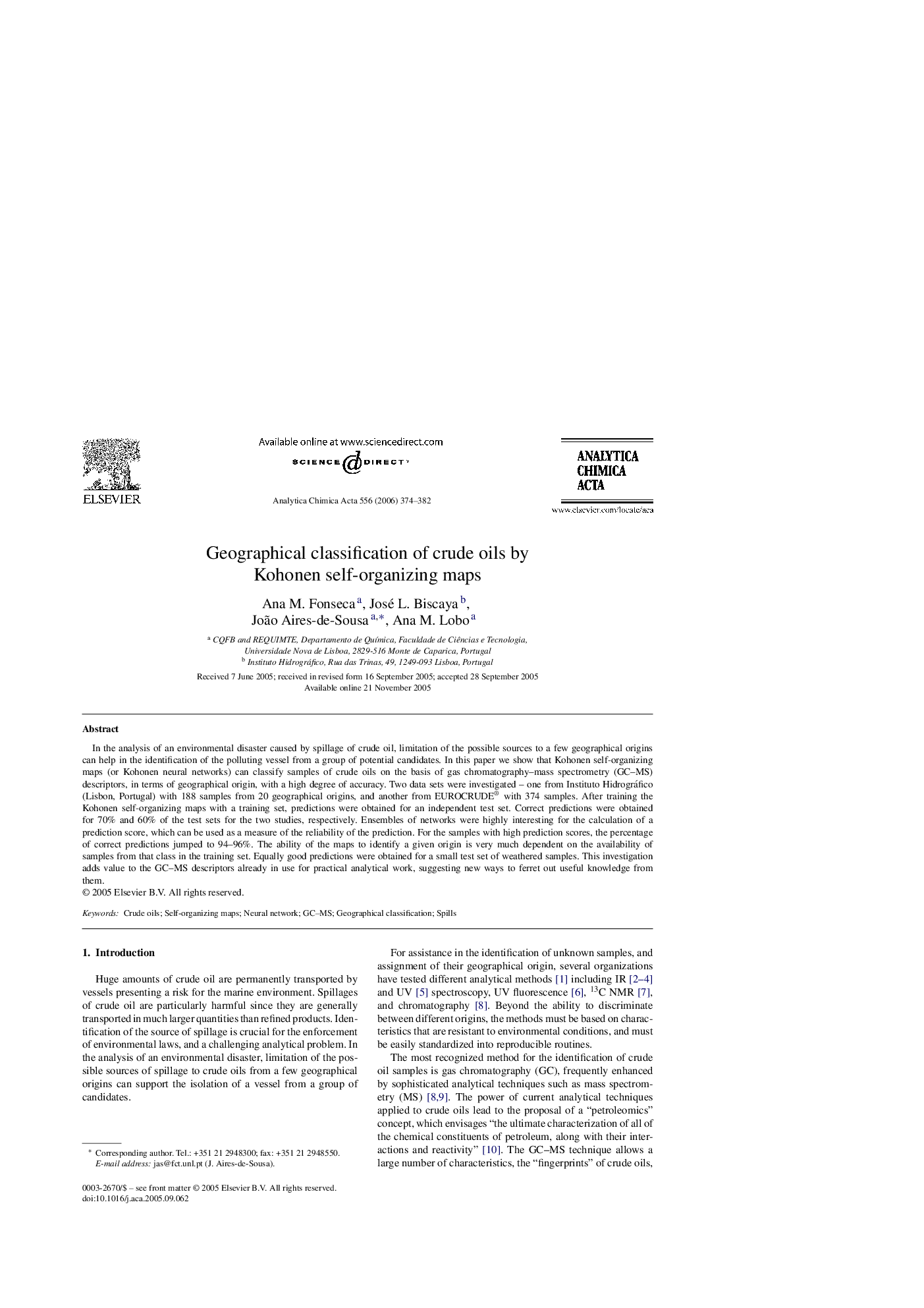| Article ID | Journal | Published Year | Pages | File Type |
|---|---|---|---|---|
| 1171814 | Analytica Chimica Acta | 2006 | 9 Pages |
In the analysis of an environmental disaster caused by spillage of crude oil, limitation of the possible sources to a few geographical origins can help in the identification of the polluting vessel from a group of potential candidates. In this paper we show that Kohonen self-organizing maps (or Kohonen neural networks) can classify samples of crude oils on the basis of gas chromatography–mass spectrometry (GC–MS) descriptors, in terms of geographical origin, with a high degree of accuracy. Two data sets were investigated – one from Instituto Hidrográfico (Lisbon, Portugal) with 188 samples from 20 geographical origins, and another from EUROCRUDE® with 374 samples. After training the Kohonen self-organizing maps with a training set, predictions were obtained for an independent test set. Correct predictions were obtained for 70% and 60% of the test sets for the two studies, respectively. Ensembles of networks were highly interesting for the calculation of a prediction score, which can be used as a measure of the reliability of the prediction. For the samples with high prediction scores, the percentage of correct predictions jumped to 94–96%. The ability of the maps to identify a given origin is very much dependent on the availability of samples from that class in the training set. Equally good predictions were obtained for a small test set of weathered samples. This investigation adds value to the GC–MS descriptors already in use for practical analytical work, suggesting new ways to ferret out useful knowledge from them.
